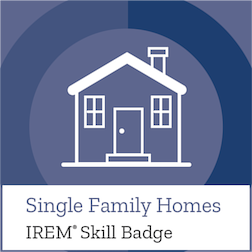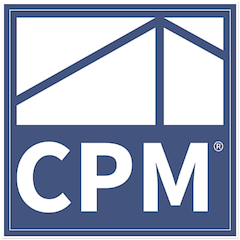Real Estate after Covid 19 Pandemic - a Brief Discussion by Gaston Reboredo CCIM CPM
How Rents, Property Values and our Lives have been affected

Since the first decade of the twentieth first century, technology and digital communication has been developing at an extraordinary pace to the point that some experts point out that Moore’s Law (expectation of the speed and capability of computers to increase exponentially every couple of years and at the same time at a diminishing cost), may be approaching the limits of physics soon. Technology continues to evolve and the cost of acquiring technology is more affordable every time. The direct relationship between technology and digital communication and productivity is something everybody is aware of and want to apply in their respective organizations. Big data is forcing most industries to replace their decision making process to a data driven decision making approach. People are increasingly feeling comfortable interacting with technology and trusting technology. Platforms continue to evolve and change, for the better, the way we do business and go about our daily lives. Technology is redefining the standard partnership between people and computers, Platforms are changing our way of acquiring products and services and Big Data is changing our decision making process. Great research has been done by Andrew McAfee and Erik Brynjolfsson of MIT (Massachusetts Institute of Technology Sloan School of Business) as they show in their books The Second Machine Age and Machine, Platform and Crowd. Way before the pandemic of Covid 19, many changes were taking place in the real estate industry. Companies using available technology were implementing productivity improvement projects, reducing wasted hours commuting to and from work, allowing people to work from home a few days a week. Employers started to ask themselves if they really needed big office spaces. On the other hand not only productivity increased but employee satisfaction increased as well. The Pandemic accelerated this process forcing employees to work from home. Many that were not sure they were going to be able to work from home came to realize they were able to. Employers on the other hand that never thought possible to manage their enterprises remotely. This realization is showing employers and employees that technology allows them to operate remotely, needing less office space, minimizing wasted commuting time, therefore having more personal time. Furthermore, as Professor of Business Administration Prithwiraj (Raj) Choudhury at Harvard Business School, points out in his extensive research on the future of work, not only are we now able to work from home but to work from anywhere. Professor Choudhury has spent the last five years studying the practices and productivity trends of working from anywhere and explains that the upside for individuals, companies and society are clear. Workers can enjoy a better quality of life, one who loves the ocean can live close to a beach and so somebody that enjoys the mountains,etc. One can live closer to family, grandparents or millennials can become digital nomads. Lower cost of living is another consideration. You can escape the costly life in the big City to a more relaxed and affordable way of life. The benefits are many. Organizations increase employee engagement. Workers are happier and more productive. Other benefits are the need of less real estate and reducing employee attrition. Future hires will maybe require lower compensation since they now live in a more affordable place. Professor Choudhury points out that for Society one benefit is to reverse the brain drain that occurs in emerging markets, small towns and rural locations. Other locations may benefit by increasing demand in housing and services due to the people relocating. For example, Barbados issued a new Visa for remote workers to move to the Island. We can cite many cases and benefits. Office Properties Now, what does this mean for Office Space? Will Offices disappear? Of course not but the demand will shift. Building owners and operators will have to re-engineer existing buildings and develop new designs that address new users’ needs. The demand for Office space will continue to decrease since companies will not have to lease large office spaces anymore. In the last 10 years the number of office square feet per employee in the United States has been declining and this trend will increase with the new work from anywhere trend. Many companies will maintain a central location where some operations must be conducted and a business presence is required. Others, like Twitter, will go 100% remote. Redesigned buildings must conform to the new demand of office space and office services by corporations. Some types of businesses will have to be in a specific location but others are going to be able to relocate to a smaller space in a cheaper location. Changes are here to stay and Office Buildings that will not adapt will suffer. The changes expected in Office demand (quantity, quality and flexibility of spaces and services) are dynamic and will change the way we used to look at Office properties forever. The quantity of required space may be less but the quality will remain the same or even be higher. One important aspect for the “new” office building or office operator is flexibility. It is expected that co-working space demand will increase once a vaccine for Covid-19 is available and restrictions on social distancing are eased. But I am not talking only about flexibility of space, I am talking about flexibility of services. Not only top notch basic secretarial services but high end translation and simultaneous translation services, excellent communication technology and the best cyber security. A la carte services that are available right when they are needed. Operators with a worldwide presence such as Regus will see increased demand for their spaces and services. Buildings and Operators that can adapt quickly will have the competitive advantage required to survive. Retail Properties E-commerce has been on the rise for several years but Covid-19 accelerated this process for at least a decade. More and more people are buying online. In 2020 it is expected that e-commerce will increase 40%. New trends such as marketing automation, programmatic advertising, artificial intelligence, enhanced shipping options, mobile commerce, augmented reality for product visualization, voice search, blockchain and drone delivery among others, will continue to develop. More and more people are comfortable with online purchases and less visits to the mall or shopping center. Retailers will have to adapt. Retailers that offer a great customer experience, unique products and a great value proposition will have better chances to survive. Centers that offer entertainment, restaurants and a unique experience will do well as long as their tenants offer great value and unique products. Neighborhood shopping centers with the local barber shop,beauty salon, spa, grocery store, smart banking center and pharmacies (health centers with walk-in clinics) will do fine as well as retail space in mixed use developments. Of course nothing will be normal until Covid-19 is behind us but once we have available vaccines and restrictions are totally lifted, retail centers and retailers with these characteristics will do well. The big boxes and the large department stores are a thing of the past. Grocery stores, although online grocery shopping continues to increase, have a long life. Many products need the combination of online and brick and mortar stores, the shopping experience can start on the computer, continue at the store and be completed on the tablet or smartphone. One example is the Apple stores which offer a great customer experience although the majority of sales are done online. Bank branches are changing. Less branches are needed and less and less tellers are required as technology advances. The new smart banking center requires less space and less locations. The future of traditional pharmacies, now that online pharmacies such as the new Amazon Online pharmacy, must be a pharmacy that includes a walk-in clinic and possibly a lab center and these pharmacies must offer an online alternative for the consumer as well. They should evolve into health community centers or they are going to be in trouble. In summary, retail centers to succeed must offer good entertainment, a great customer experience, retailers with unique products and great value proposition and will have a smaller footprint and no large stores or big boxes. Warehouses and Distribution Centers The need to properly satisfy the distribution of goods has always been the engine behind warehouse demand. In later years with the increase in e-commerce activity has increased the demand and therefore development of warehouse and distribution centers. Furthermore the need for more effective storage and faster consolidation of cargo, has changed the requirements for warehouses, translating in higher clear space, more open space in between columns and larger trucking area among other features. Covid 19 has had a catalytic effect in increasing the demand for warehouse space and distribution centers due to the increase in e-commerce activity. The pandemic forced many people to start ordering goods online or increase their online ordering and/or switch additional products from in store purchase to online ordering. Most people that have started or increased online ordering will get accustomed to it and will not go back to in store purchases for most products. This increased activity in e-commerce will not slow down, it will continue its trend, therefore for most market areas the demand for warehouses and distribution centers will continue to increase, boosting rents, property values and development depending on each market. Of course obsolete spaces will have no place in this game. There is no question that in general terms warehouse demand is increasing and is expected to continue to increase, only obsolete spaces will suffer but for the most part this sector has a very bright long term future. Residential Properties Now that we know that most of us cannot only work from home but from anywhere and businesses realize there great savings to the bottom line and sometimes increase in productivity in remote working, some locations will be affected by the new population trends while others will benefit. We can choose to live in areas that suit our lifestyle now that we can basically work from there. Why live in high cost, high tax and unsafe Cities while we can choose to work from places that offer a lower cost of living, lower taxes, more safety and better suit our wants and needs. Residential properties in such areas will see an increase in demand and therefore in rents and values. The demand for Condos, Single Family Homes and Townhomes as well as apartments will increase in areas that offer a better quality of life. Areas that are not farther than 2 hours driving time from a major airport and no more than 30 minutes driving time to cultural and entertainment centers or those with great public transit will benefit the most. Now that we are getting over Covid multi family sees great opportunities as well as family oriented single family home neighborhoods that offer great schools or mixed use projects with great amenities where people can live, work and play. Market rents and property values will tend to increase and remain strong in such areas and those located in municipalities that are safe and tax friendly will benefit the most. We can see that the pandemic changed our lives and real estate in a way we never imagined and technological changes will continue to have great impact in the way we live and where we live. The flexibility and increase in productivity and better quality of life that technology continues to provide as it continues to advance will take us to places we never imagined possible before.
Let’s continue to see how these advances in technology will continue to affect, mostly in a positive way, our lives and how they will continue to affect real estate demand and values.
Share this post













